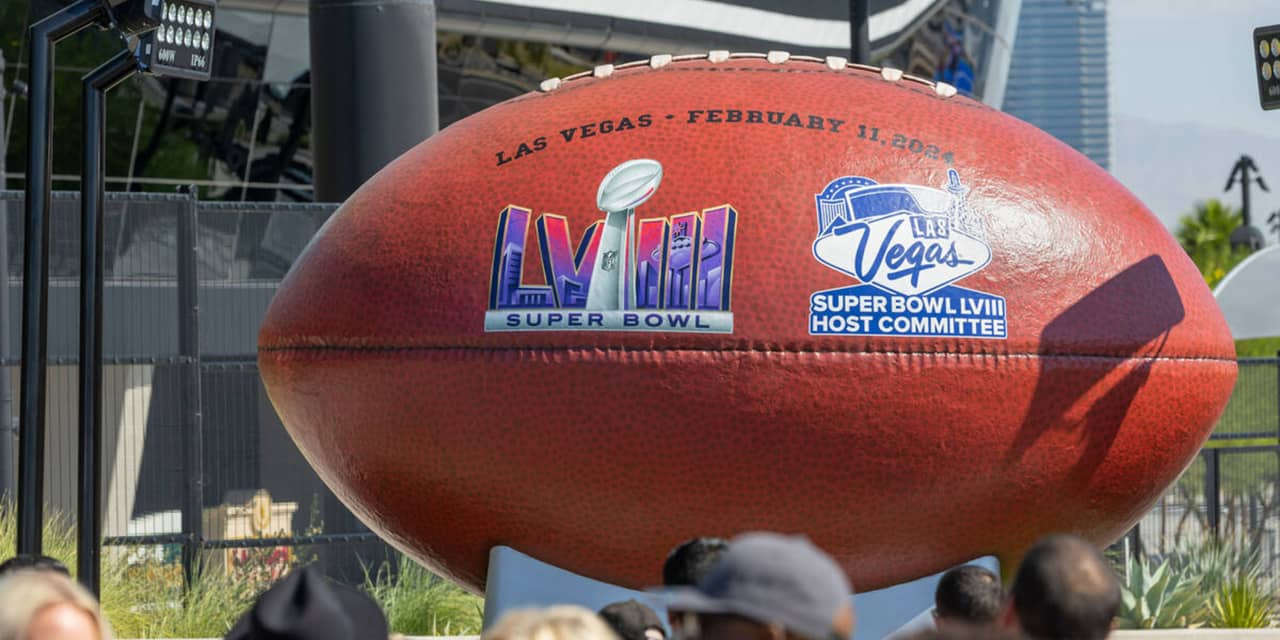In these times of deep divisions, one thing Americans can agree on is the Super Bowl. It has become our secular version of Carnival or Fat Tuesday, an opportunity to indulge in food, drink, and conviviality during dreary, dark winter, but without a Lenten fast ahead of us. Pleasure without pain has become as much a part of the American ethos as life, liberty, and the pursuit of happiness.
And, almost as an afterthought, there will be a football game. This year’s matchup between the Kansas City Chiefs and the San Francisco 49ers takes place in Las Vegas, which is especially apt, given that gambling is an integral part of the game, as it is for so many competitive events. The wagers supposedly extend even to what some pop star whose boyfriend is playing in the game might do, not just what might be called on a fourth-down-and-short-yardage situation.
Indeed, the expansion of legal gambling has been a boon to stock market investors, notably those who have ridden shares of
DraftKings.
The Almost Daily Grant’s note this past week, from the invaluable advisory headed by Barron’s alum Jim Grant, pointed out that DraftKings’ shares were up some 283% from late 2022. That raised the company’s valuation to near $20 billion despite it having posted negative adjusted Ebitda (earnings before interest, taxes, depreciation, and amortization, a measure of cash flow) in each quarter going back to the start of 2019. DraftKings management sold $145.2 million of stock in the past three months, more than all but five of the 152 U.S.-listed consumer cyclical firms tracked by Bloomberg—proving again that the winners in gambling aren’t the punters but the bookies.
The heads-I-win, tails-you-lose notion also underlies most investors’ mind-set as the
S&P 500
index topped the 5000 mark for the first time this past week. The Federal Reserve is certain to lower interest rates in the coming year even as the oft-predicted recession keeps getting pushed further out. So: If the economy stumbles, the central bank comes to the rescue; if not, corporate earnings remain on the upswing, justifying stock valuations.
It’s far from an original observation that the ascent of the S&P 500 and other broad-market measures owes much to a few technology stocks of mammoth size, whose outsize influence has lifted capitalization-weighted benchmarks to records. And to some extent, these megacap tech titans’ superior earnings have justified their ascent above the crowd of other stocks.
Yet the extent of the ascent is stunning. Douglas Kass, an old friend of this column who heads Seabreeze Partners Management, passes along an especially revealing illustration of that phenomenon from Tavi Costa of Crescat Capital, a global macro hedge fund manager in Denver.
Costa’s note showed a market capitalization for
Microsoft,
now the world’s most valuable company, at $3.1 trillion. That was nearly twice the size of the entire S&P 500 energy sector, at $1.6 trillion. In terms of annual free cash flow, Microsoft reported an estimable $67 billion, less than half the $135 billion from these energy companies. To those of us who came of age during the energy crisis, we thought Big Oil was omnipotent. But the expectations from artificial intelligence evidently far outweigh the here-and-now rich returns from energy, including primitive fossil fuels.
At the same time, the much-predicted economic downturn seems to be deferred to the evermore distant future. Three recessions have been predicted in the past two years, write Mizuho Securities economists Steven Ricchiuto and Alex Pelle in a client note.
The first was based on the notion that the Fed overtightened in response to the post-Covid inflation jump. The resulting inverted yield curve, with short rates higher than long bond yields, ignited fears of a liquidity squeeze. Then, fears of a downturn followed last year’s collapse of Silicon Valley Bank, which was actually met by renewed Fed largess, staving off a general credit crunch. (So far, the woes of
New York Community Bancorp
appear particular to that institution.) Finally, the resumption of student-loan repayments back in 2023, also thought to dent consumer spending, has failed to do so, as I wrote last year.
Yet risk markets still anticipate that the Fed will lower rates, even with the S&P 500 topping 5000 and junk-bond credit spreads at historic lows. Corporations are actively issuing bonds, both in advance of coming maturities and to fund share buybacks, suggesting little need to loosen credit.
Bull markets, John Templeton observed, “are born on pessimism, grow on skepticism, mature on optimism, and die of euphoria.” It would appear that this market has progressed through the second stage of skepticism after 2022’s declines and has progressed to optimism based on continued growth that will be backstopped by Fed rate cuts. As for euphoria, Société Générale strategist Albert Edwards observes that the U.S. tech sector is worth a third of the total U.S. equity market, topping the previous peak seen in July 2000 at the height of the dot-com bubble, something he thought he’d never see again.
On any given Sunday, supposedly anything can happen. That attitude appears to have extended to the weekday trading sessions.
Write to Randall W. Forsyth at [email protected]
Read the full article here




